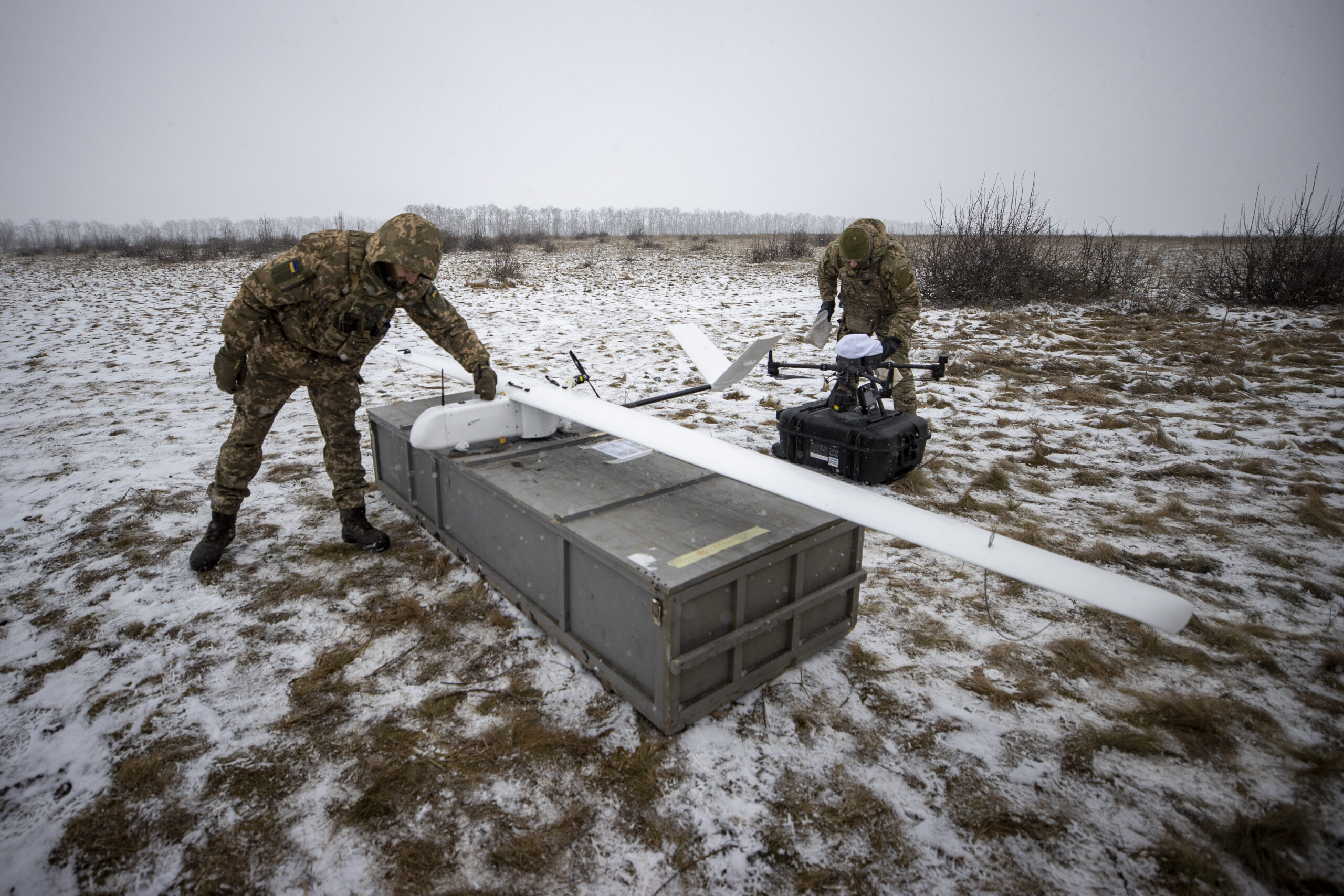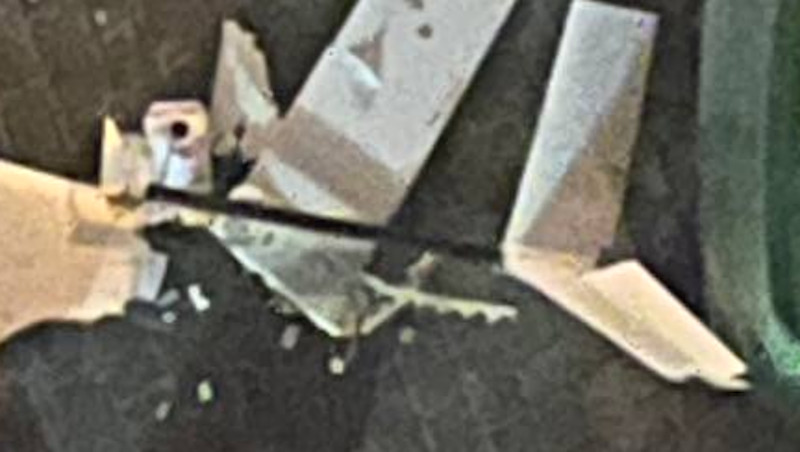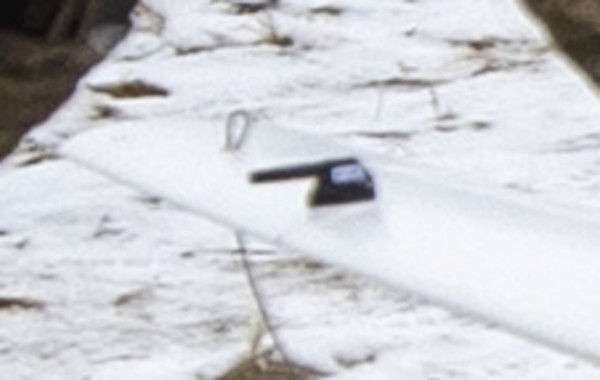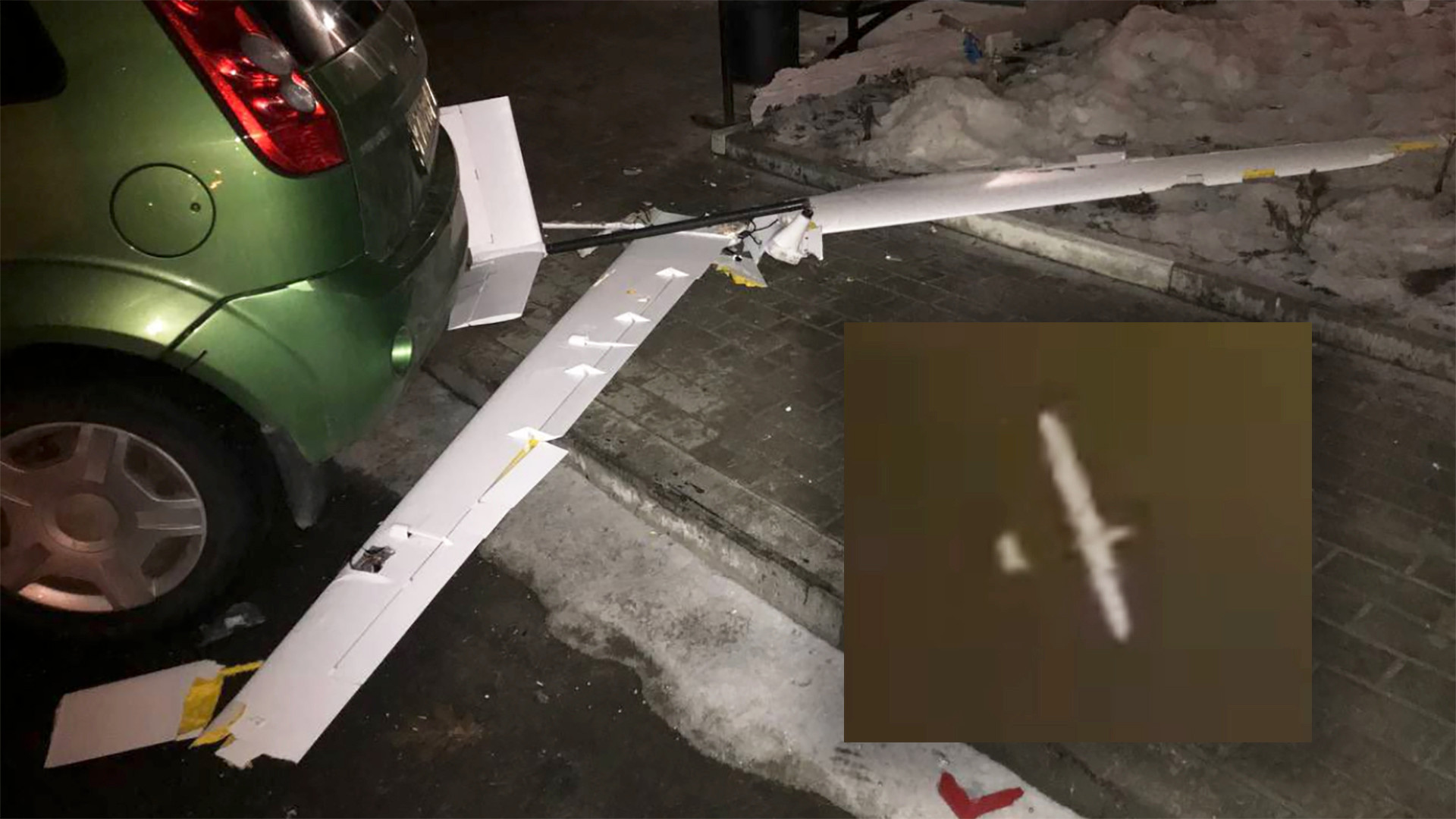Details remain limited, but three apparent improvised kamikaze drones have reportedly come down in Russia’s Belgorod region. Imagery of the drones suggests they could be a design in Ukrainian military service that has been weaponized in part through the addition of British-supplied explosive charges. Since April 2022, there have been multiple reports of Ukraine’s armed forces striking at targets in Belgorod, which lies just on the opposite side of the country’s northeastern border, primarily using drones.
Reports that remain largely unconfirmed, some citing Belgorod’s governor, say that the trio of drones came down in the region’s capital city, also named Belgorod, earlier this evening local time. Additional reports that have not yet been confirmed suggest that Russian air defenses may have knocked them out of the sky, or at least attempted to do so.
Pictures and videos now circulating on social media show what looks to be at least one of the drones in flight over Belgorod, as well as at least two separate sets of wreckage. What their intended targets may have been are unclear. At the time of writing, there are also no reports of any significant damage or casualties.
The exact design and origins of the drones are also not immediately clear. There has been some speculation that these may actually have been Russian drones that crashed on their way to Ukraine, but there is no evidence so far that this was the case.
Imagery of some of the wreckage shows what looks to be a v-tail attached to a slender black tubular boom. This, in turn, looks to be very similar to the tail assembly seen on a drone in a picture of Ukrainian forces training in the eastern part of the country. The War Zone has not yet been able to identify this drone, but is working to do so.



Of course, this is not a totally unique drone configuration, and there are various production designs, as well as home-brew ones, with at least somewhat similar features.
At the same time, there are other similarities between the drone seen in the Zaporizhzhia picture and parts of the reported wreckage on the ground in Belgorod. This includes what looks to be curved tips on the main wings. There is also a black-colored section on what appears to be the bottom of the end of one of the wings of one of the downed drones. The Zaporizhzhia image shows a black-colored pitot tube on top of one of the drone’s wings, which could be attached via a small plate-like fixture underneath.



Other pictures reportedly showing portions of the wreckage of the drones in Belgorod show what look to be white rectangular explosive charges and sections of improvised fragmentation linings made up of ball bearings and other material. The latter component would send shrapnel flying when the main charge detonates. There are also batteries, which could have been used to power various systems, including the detonator.
The apparent explosive charges are marked “L23A1” and “PE8,” which could further point to the drones having a Ukrainian origin. There are demolition charges in British Army service with the nomenclature L23A1 that consist of PE8, an advanced plastic explosive that is very safe to handle, in sheets weighing approximately 0.32 kilograms (around 0.7 pounds), according to a copy of a U.K. Ministry of Defense manual available online. That document notes that these explosive sheets come packaged five to an “intermediate container,” which would have a net weight of around 1.6 kilograms (just over 3.5 pounds). The U.K. government has been one of the most significant suppliers of military aid to Ukraine, deliveries of which started even before Russia’s all-out invasion.
Two such explosive blocks would seem like a reasonable payload for a drone of this size and configuration. As to how the drones might get to their targets, one possibility is that they could be further set up to fly to a designated set of coordinates with the assistance of GPS or some other satellite navigation system. Another control method might be to have them fly to a specified intermediate area first, where another operator closer to the target could take over direct control.
Though the size of this improved “warhead” is small, it could still be quite threatening, especially if used to hit targets like ammunition or fuel dumps where there could be a higher probability of triggering secondary explosions.
Ukraine has been a prolific user of drones turned into impromptu weapons, including types capable of conducting strikes on targets at extended ranges. Modified commercially available remote-controlled aircraft and missile-like Soviet-era reconnaissance drones refitted with warheads instead of cameras have been used against other targets inside Russia and Russian-occupied areas of Ukraine.
The drones that appear to have come down in Belgorod look to be much less robust than these other longer-ranged improvised aerial munitions, but this could make sense for a number of reasons. Most immediately, a smaller design could be harder to detect and shoot down.
In addition, given Belogorod’s proximity to the Ukrainian border – the region’s capital city is only around 20 miles from that boundary – strikes on targets there do not necessarily demand systems with especially long range. As such, using smaller, less capable drones would allow longer-range types to be saved for use against locations deeper inside Russia or areas of Ukraine under Russian occupation that might otherwise be more difficult to reach.
Using lower-end and presumably cheaper drones for strikes on targets in Belgorod could potentially let Ukrainian forces increase the tempo of those operations. Tonight’s apparent attempted drone strikes come just four days after a large fire broke out in the city of Belgorod, which may have been the result of Ukrainian missile or drone strikes. There are unconfirmed reports that this blaze was at an ammunition dump.
Ukraine’s ability to conduct strikes inside Russia, in general, has both practical and propaganda value. Hitting logistics nodes, especially in border areas, can have a real impact on the ability of the Russian military to sustain its operations inside Ukraine.
Strikes inside Russia also brings the war home to average Russians, which has its own impacts. In January, there were reports that Russia’s military had established a new defensive line inside the Belgorod region that was situated many miles back from the border. This had left at least one village on the wrong side of the new ‘front,’ prompting complaints from residents there that they had been left without any protection.
Regardless, the drones that have reportedly come down in Belgorod look to be yet another example of adapting an unarmed type into a weaponized one. It will be interesting to see if this particular design now emerges elsewhere.
We will update this story if and when more information becomes available.
Contact the author: joe@thedrive.com
